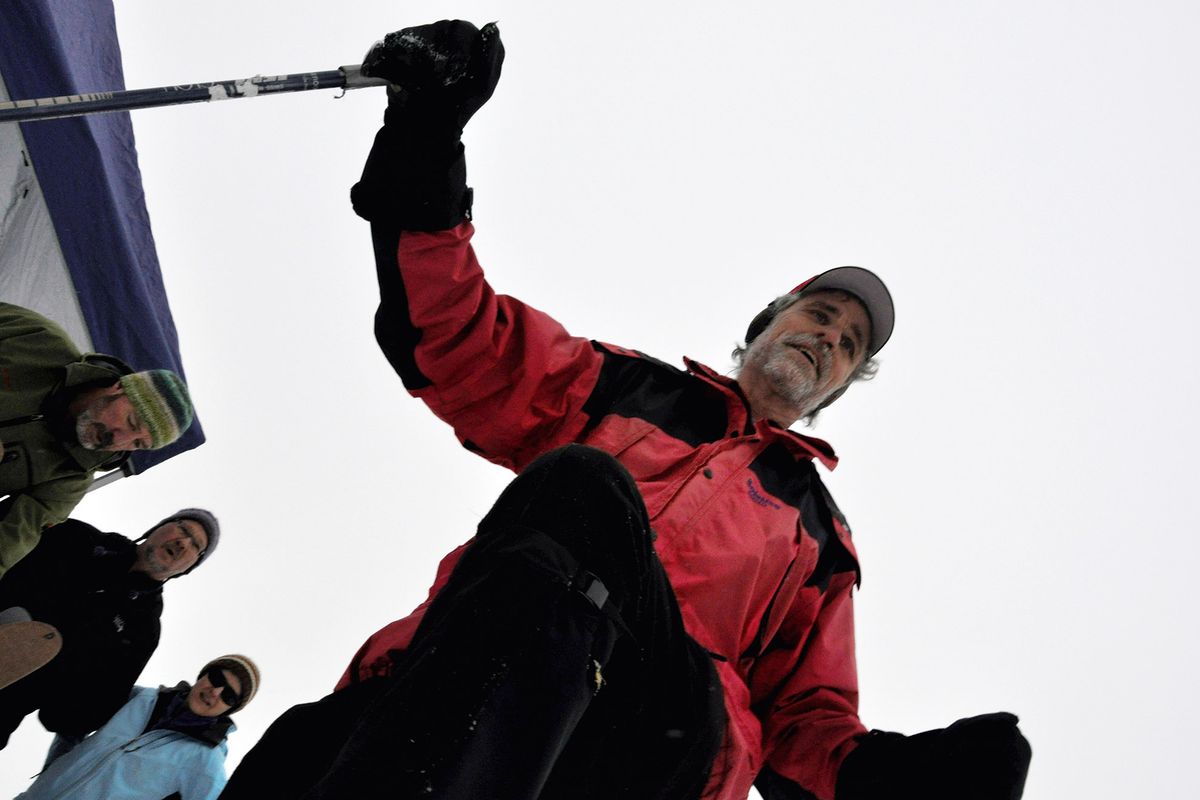User’s guide to Mount Spokane unlocks park’s secrets

The biggest peak in Spokane’s backyard is so familiar, yet so unknown.
The number of people informed that it was Mount Baldy before being renamed Mount Spokane in 1912 could be higher than the sum of visitors who understand whether a Discover Pass or Sno-Park vehicle permit is required for access this week.
A new book, “Mount Spokane State Park: A User’s Guide,” answers those questions and packs a ton of other information past and present into 150 pages.
“The book is meant for people who think they know all about the mountain as well as for those who don’t go up there because they’re afraid of getting lost,” said author Cris Currie. “There’s a lot to learn.”
Commercial and recreational interests have vied for the mountain’s natural resources before and after 500 acres were dedicated as one of Washington’s 13 state parks in 1927.
Today the state park is estimated at 13,202 acres, the largest contiguous park among 117 in the state park system.
From the base to the 5,883-foot summit, the mountain has amazing diversity, critters, creeks, nooks and crannies and even trails undiscovered by most of the thousands of people who visit the four-season natural playground each year.
“I wanted the book to take the fear and frustration away so more people can see it, enjoy it and understand it,” Currie said.
Ten clear GIS-based color maps and elevation charts help describe hiking, biking or skiing over 15 routes that link park trails.
But first there’s a primer to how recreation got to where it is on the mountain.
Perhaps no single person has been more intimately involved in the park for the past two decades than Currie. As the founder of the former Mount Spokane Advisory Committee and then, since 1998, the president of the Friends of Mount Spokane State Park, he has been involved in much of the park planning.
Currie’s been roaming the mountain on foot, skis, snowshoes and bike since 1979 and through three state park managers.
He’s also been one of the most faithful in showing up with a pulaski or a hammer to volunteer for trail and construction projects. His education in biology, nursing and conflict resolution as well as professional experience as a mediator have served the park in many ways.
“What makes things happen at the park is all the people involved,” he said. “Likewise, the book is a collaboration of a lot of contributors from state parks, the Friends group and others.”
The book’s group effort includes Ron Dexter, a Mount Spokane-area resident, avid birder and photographer who contributed images of 16 notable bird species found in the park.
John Baumann, an expert in butterflies and accomplished photographer, also contributed colorfully to the book’s Natural History section.
The mountain’s skiing history, worth a book in itself, is tightly summarized along with the cultural history. Historic photos include an aerial shot of the Civilian Conservation Corps camp around 1935.
In contrast to many books written about state parks and recreation is Currie’s insight on the planning history, including how the land classifications were hashed out, paving the way for some areas opening to recreation while others remain natural forest.
The book helps explain park policies and master plans and how they were formed and translated into trails for bikers, hikers, skiers, snowshoers, snowmobilers and horse riders.
Some of the park management controversies are outlined in a chapter that concludes with the proposed expansion of the downhill ski area concession – a chapter that’s still evolving.
“The park is constantly changing, which was one of the challenges of getting the book done,” said Currie, who’s been piecing it together for 10 years.
“We worked on the maps, making edits dealing with trails right up to the last week before publication. It’s up to the minute, until something changes.”
The book guides users through the mountain’s weather and the recreational opportunities as they change with the seasons. Mount Spokane State Park is Washington’s most distinguished winter park with alpine and nordic skiing areas, snowmobile trails, warming huts and options for backcountry skiing and skijoring with dogs.
Currie spells out the various rules and road and area restrictions that help keep harmony on the mountain.
The book covers the history of buildings on the mountain, from the long-gone Cook’s Cabin to Quartz Mountain Lookout and the most recent addition, the snowshoers hut opened this winter at Smith Gap.
The trail system has changed extensively in the past 20 years. The nordic trail system has expanded to one of the largest in the country and single-track trails have blossomed.
“The main evolution in the single track has been trying to get rid of the fall-line trails and the erosion that goes with them,” Currie said. “Trails are being rerouted to grades of no more than 10 percent. With the help of park staff and a lot of volunteers, the work is gradually getting done.”
The biggest new area of trails development involves planning and constructing specialized downhill mountain biking routes, he said.
“When people complain about what’s happening up there, or wondering why this or that isn’t done, there’s usually an explanation,” he said. “It’s an incredibly complicated place serving a lot of interests. Making intelligent decisions for the future depends on understanding that.”